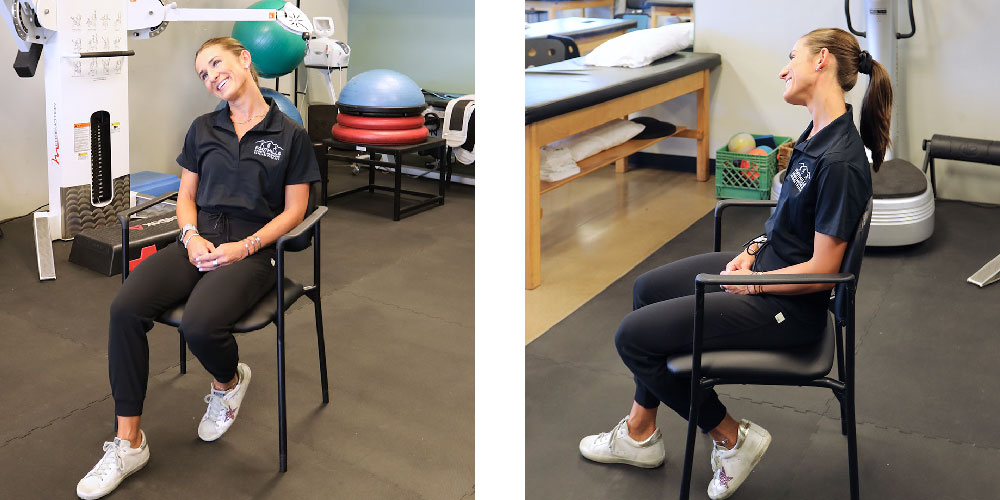Many people who work at a desk, sitting for eight or more hours a day, complain of neck, shoulder, and mid-back pain. Aches and pains through these regions tend to arise due to poor posture while sitting at our desks. The muscles in your neck and shoulders become fatigued from keeping you upright against gravity while you sit typing away at your computer for a long time. Neck and shoulder stretches through these regions can be simple and efficient during the workday. It can also give your body much-needed movement after sitting at your desk for an extended period. If your poor posture while sitting goes unaddressed, these aches and pains can lead to chronic pain, affecting your overall neck and shoulder mobility during daily activities.
To help prevent this from happening, here are three stretches to help you stretch your tired muscles so that you can reset and begin to sit with better posture.
3 Neck and Shoulder Stretches to Reset Your Posture at Work
1. Seated Upper Trap Stretch
- Start in a seated position sitting nice and tall for good posture.
- Bring your hand to the side you wish to stretch behind your back.
- Place your other hand on top of your head and gently pull your head to the side away from the hand behind your back. You should feel the stretch through your neck through the upper trap region.
- Hold this for 30 seconds on both sides.

2. Pectoralis Doorway Stretch
- Begin by standing in a doorway with the arm stretched raised above your head and placed against the side of the doorframe.
- Gently lean forward through the doorway and slightly rotate your body away from the raised arm. You should feel the stretch through the front of your chest.
- Hold this for 30 seconds for both arms.

3. Seated Thoracic (Mid-back) Extension Stretch
- Sit in a firm, low-back chair with the back of the chair sitting underneath your shoulder blades.
- Cross your hands and place them on top of the opposite shoulder. Lean back over the chair, allowing your shoulders to extend back over the edge of the chair to feel the stretch through your mid-back.
- Repeat up to 10 times, moving further into the motion if comfortable.

These stretches should not cause pain but should help heal tight muscles through your neck, mid-back, and shoulder region. Stretching can help keep your neck from becoming painful while at work and can help prevent pain. If you already have upper region pain and these stretches are not enough to decrease the pain, there may be an underlying issue. You may benefit from seeing a physical therapist to help determine the cause. Find a location nearest you!
Article by Stacy Scherzer MPT, COMT




